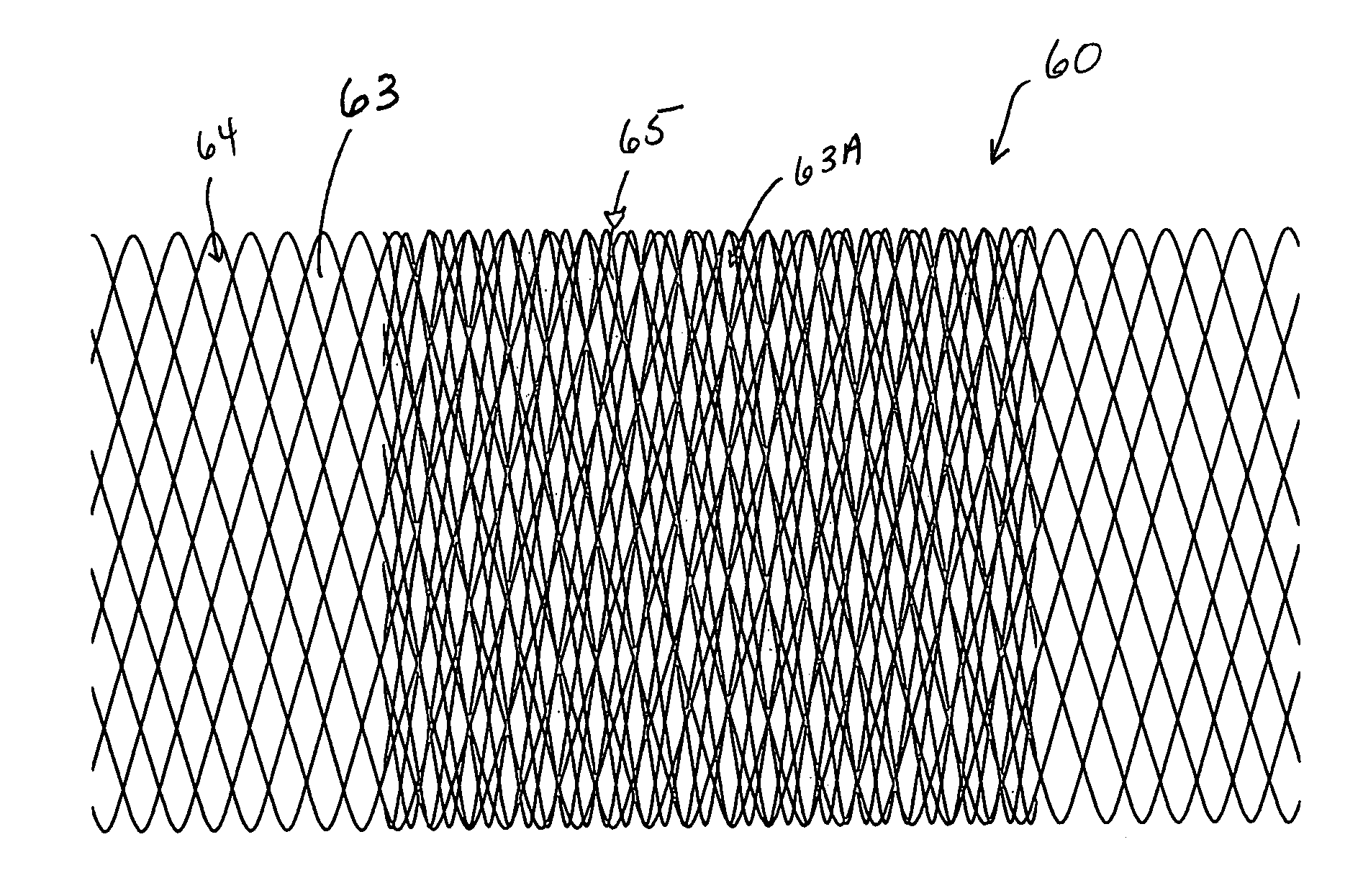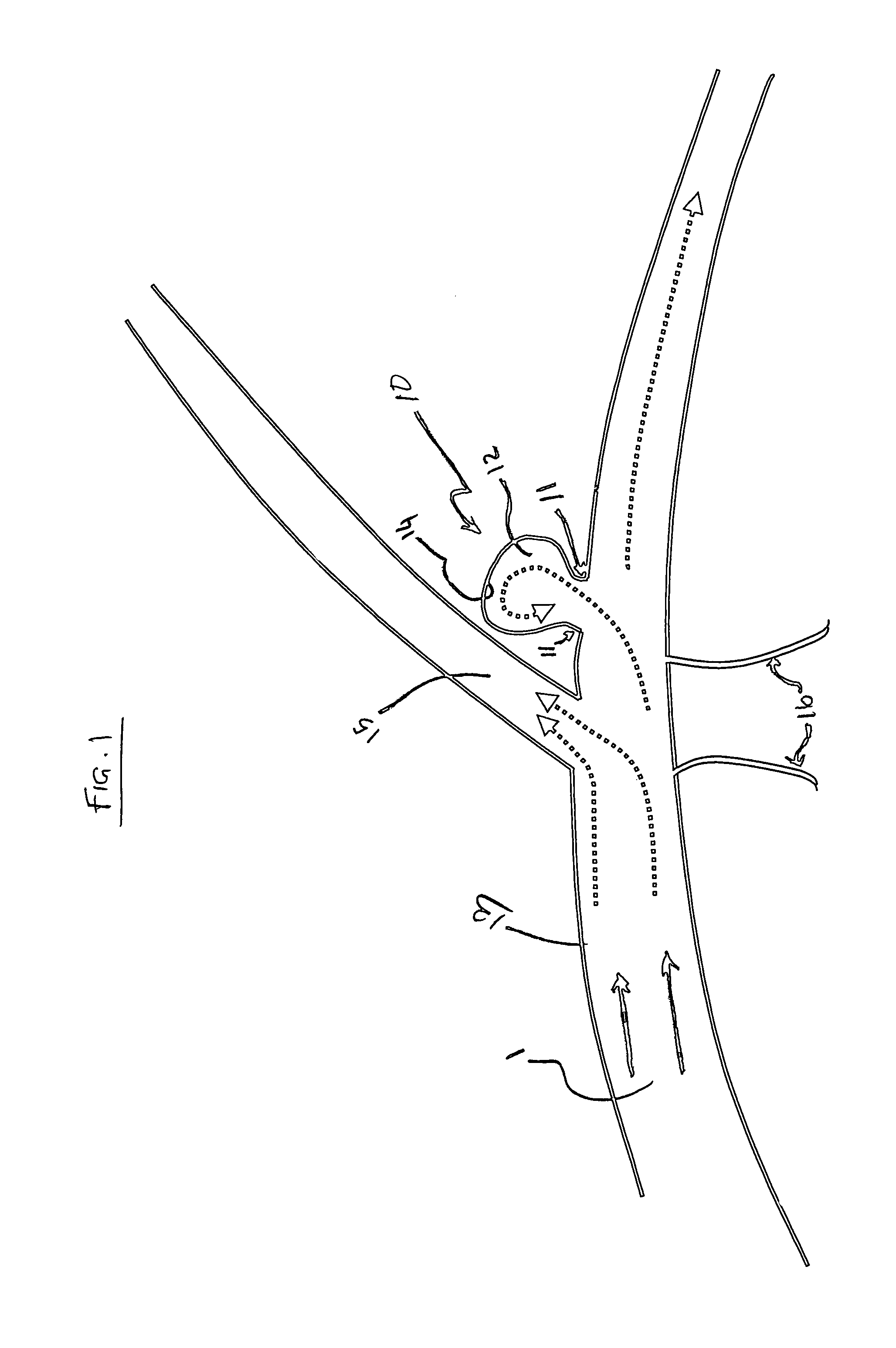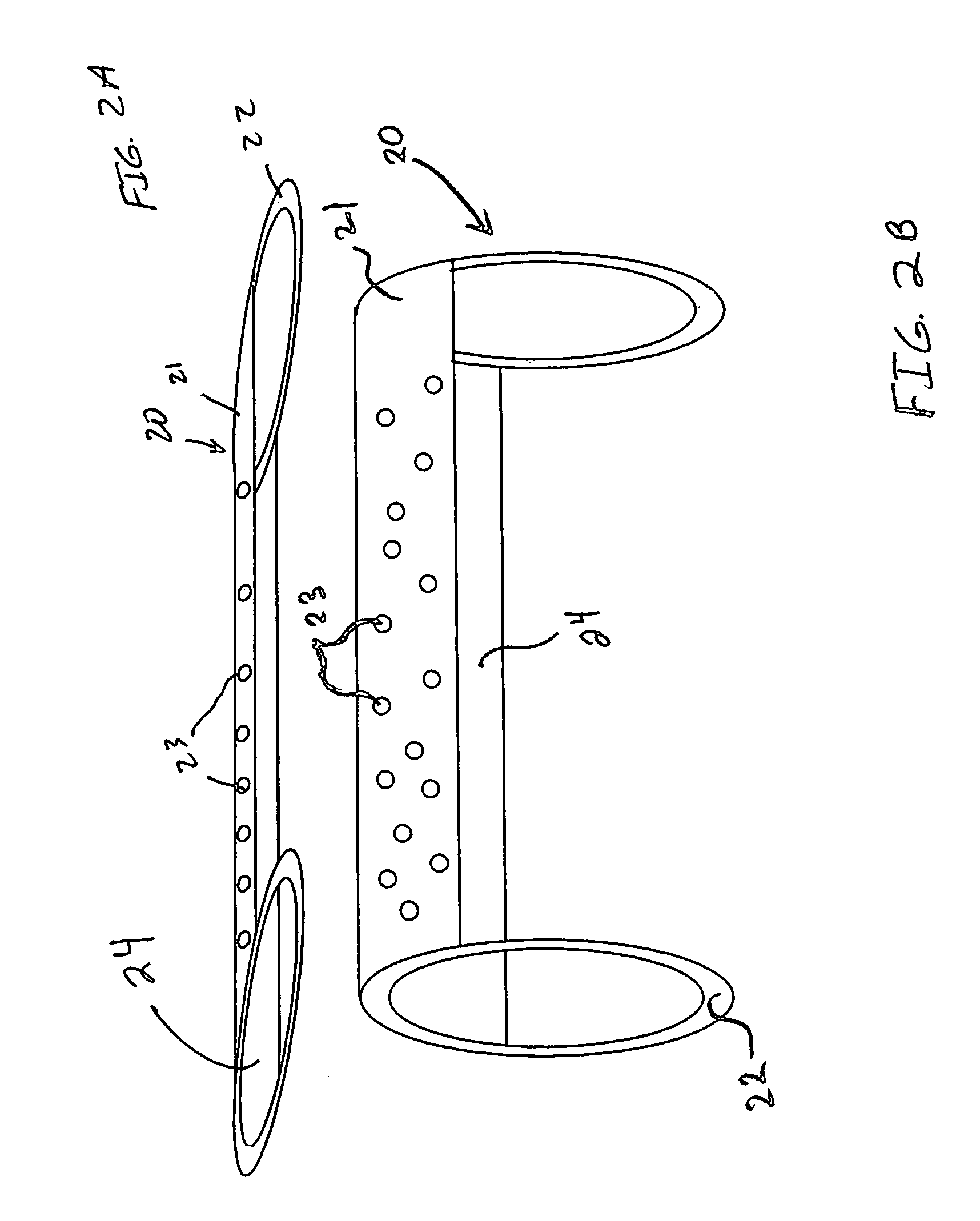Flexible vascular occluding device
a flexible, vascular technology, applied in the field of implantable devices, can solve problems such as thin walls of thin walls, and achieve the effect of easy conformation and easy navigation of tortuous vessels
- Summary
- Abstract
- Description
- Claims
- Application Information
AI Technical Summary
Benefits of technology
Problems solved by technology
Method used
Image
Examples
Embodiment Construction
[0044]The devices shown in the accompanying drawings are intended for treating aneurysms. They are generally deployed, using micro-catheters, at the location of a cerebral aneurysm that is intended to be treated. One such system is disclosed in copending U.S. Patent Application titled “System and Method for Delivering and Deploying an Occluding Device Within a Vessel”, Ser. No. 11 / 136,398 filed on May 25, 2005, which is incorporated herein by reference in its entirety. The embodiments of the endovascular occluding device according to aspects of the present invention is useful for treating cerebral aneurysms that are commonly treated using surgical clips, microcoils or other embolic devices.
[0045]FIG. 1 illustrates a typical cerebral aneurysm 10 in the brain. A neck 11 of the aneurysm 10 can typically define an opening of between about 2 to 25 mm. As is understood, the neck 11 connects the vessel 13 to the lumen 12 of the aneurysm 10. As can be seen in FIG. 1, the blood flow 1 within...
PUM
 Login to View More
Login to View More Abstract
Description
Claims
Application Information
 Login to View More
Login to View More - R&D
- Intellectual Property
- Life Sciences
- Materials
- Tech Scout
- Unparalleled Data Quality
- Higher Quality Content
- 60% Fewer Hallucinations
Browse by: Latest US Patents, China's latest patents, Technical Efficacy Thesaurus, Application Domain, Technology Topic, Popular Technical Reports.
© 2025 PatSnap. All rights reserved.Legal|Privacy policy|Modern Slavery Act Transparency Statement|Sitemap|About US| Contact US: help@patsnap.com



